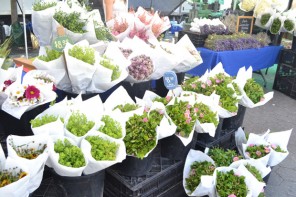South Africa plans to build a massive $21.8-billion, 5 000 MW solar park in its semi-desert Northern Cape province as part of an aggressive push to grow its highly industrialised economy and reduce poverty without increasing its carbon footprint. Depending on investor interest, construction could begin as early as 2012.
With the help of a World Bank loan, Eskom, South Africa’s primary energy utility, is already developing a 100 MW concentrated solar power plant, estimated to cost about $1-billion, in the same region. And a smaller-scale solar installation is on the cards for Robben Island, the place Nelson Mandela was imprisoned for many years.
South Africa’s strategy is to make cleaner, more efficient use of the country’s abundant, low-cost coal reserves in the near term while at the same time expanding the use of low-emission energy technologies and renewables.
This strategy will be in the global spotlight in 2011, when South Africa hosts the 17th annual UN Framework Convention on Climate Change conference. New global emission targets are also likely to be discussed at the gathering.
This year, the World Bank granted Eskom a $3.75-billion loan both to help build the country’s biggest coal-fired plant, Medupi, and to finance renewable energy projects such as the solar power plant as well as wind farms. With the help of the loan, Medupi will be equipped with state-of-the-art technology to produce more power with less coal.
Private sector investment in other renewable energy plants is also encouraged through generous feed-in tariffs, which were approved by the National Energy Regulator of South Africa in late 2009 and rate among the most attractive worldwide.
According to Stefan Gsänger of the World Wind Energy Association, South Africa is the first country in Africa to introduce a feed-in tariff for wind energy. “Many small and big investors will now be able to contribute,” he says. “This will help South African communities to invest in wind farms and generate electricity, new jobs and new income.”
Another renewable energy scheme is Eskom’s solar water-heating programme, in which consumers who replace electric geysers with solar-powered ones are given a substantial rebate. The government has also launched a massive drive to install low-energy lighting in thousands of buildings it owns, which will save some $845-million in electricity costs every year.
The state-owned Central Energy Fund’s newly built headquarters are emblematic of new energy priorities. The four-storey building has sensors which switch lights off when no-one is in a room and dim them when there is enough daylight. A magnetic motor-operated lift uses 80% less electricity than a hydraulic one. Two 250 000 gallon solar heaters provide hot water.
In September the government introduced an emissions tax on new passenger cars and light commercial vehicles. South Africa is the first country in the world to include the latter in such a regime, which aims to encourage individuals and businesses to buy smaller, more fuel-efficient vehicles.
The government also plans to develop a massive crude-oil refinery to produce quality petrol and diesel to international standards by 2015.
Nuclear technology will also be added to the mix, as a key way of “generating enough electricity in a responsible and sustainable fashion to support higher economic growth levels”, the Department of Energy says.
Five to six new nuclear stations will be built over the next few decades, fuelled by South Africa’s uranium reserves. Announcing the ambitious plan at a recent power summit, Minister of Energy Dipuo Peters said a series of nuclear plants would be more cost-effective than a single large one.
The plants would be placed near points of demand, reducing reliance on comparatively inefficient cross-country power lines that transmit electricity from distant coal fields.
Source: www.mediaclubsouthafrica.com







